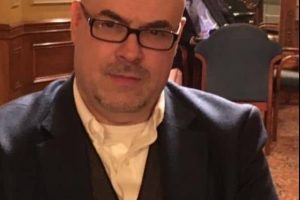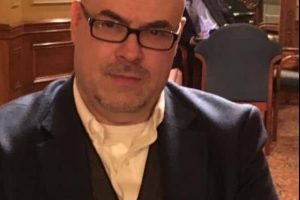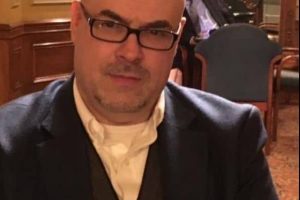
I have had the opportunity to swim with dolphins in the Caribbean, but have only seen pictures of sperm whales, one of the world’s largest marine mammals.
First, here’s how the National Oceanic and Atmospheric Administration describes sperm whales:
Sperm whales are the largest of the toothed whales and have one of the widest global distributions of any marine mammal species. They are found in all deep oceans, from the equator to the edge of the pack ice in the Arctic and Antarctic.
They are named after the waxy substance—spermaceti—found in their heads. The spermaceti is an oil sac that helps the whales focus sound. Spermaceti was used in oil lamps, lubricants, and candles. Sperm whales were a primary target of the commercial whaling industry from 1800 to 1987, which nearly decimated all sperm whale populations. While whaling is no longer a major threat, sperm whale populations are still recovering. The sperm whale is listed as endangered under the Endangered Species Act and depleted under the Marine Mammal Protection Act.
Next, here’s the full “60 Minutes” segment:
From the full transcript:
In December, nearly every member country of the United Nations pledged to protect at least 30% of the world’s land and sea by 2030 to reverse the damage done by humans and protect vulnerable species.
One of the animals at risk is also one of the largest in the ocean and among the least understood. Sperm whales are not the predators of Moby Dick legend. They have brains six times larger than ours and spend most of their lives in the darkest depths of the ocean. It is difficult to describe their size without comparing them to a school bus.
Last month, we traveled with National Geographic Explorer Enric Sala to the Caribbean island of Dominica, where he’s proposing protections for the hundreds of sperm whales living there.
For her (first-ever) report, correspondent Cecelia Vega also interviewed Francine Baron, CEO of the Climate Resilience Execution Agency for Dominica.
CECILIA VEGA: What was it about Hurricane Maria that made the leaders of this country say, “We have to do something, we really have to act”?
FRANCINE BARON: We suffered the equivalent of 226% loss of GDP. So we could see the trend, and we realized that we needed to become much more resilient.
VEGA: When Enric Sala came to you with this idea of creating– a sanctuary for these whales, what was his pitch to you?
BARON: We see whale-watching as an important part of our tourism product, and it’s something that needs to be protected. And– the idea of creating– greater protection for the whales is something that Dominica is very open to. And we were very pleased with the suggestion that Enric made to creating– a recognized sanctuary for the whales.
Baron has been vocally advocating for Dominica since taking over at CREAD in 2021.
Greenpeace documented the political decision Dominica made in 2008 to end its support of a whaling industry revival.
For many years, the Commonwealth of Dominica was a staunch ally of Japan at the IWC annual meetings, voting with Japan in support of restarting commercial whaling.
But in 2008, Prime Minister Roosevelt Skerrit announced, “This year the Cabinet took a decision that Dominica shall abstain on the issue of commercial whaling; we are breaking a trend that we have maintained for a number of years.” He added that the decision to change the island’s pattern of voting was in the best interest of the country.
[…]Dominica is sometimes called the whale watching capitol of the Caribbean. Deep sheltered bays along its western coastline provide a haven for the sperm whale, which calves and breeds in this type of habitat. A short boat ride brings visitors into contact with the world’s largest toothed animal in the calm turquoise Caribbean Sea.
Dominica is the only country in the world where the sperm whale resides all year long, although sightings are most common between November and March. Whale watching operators follow strict codes of conduct on their excursions.
Just a few years earlier, in 2005, the Dominica Sperm Whale Project was launched.
The Dominica Sperm Whale Project is an innovative and integrative study of the world’s largest toothed whale. Through thousands of hours of observation of sperm whale families, the population of whales in the Caribbean has given us the unique opportunity to come to know them as individuals within families. Our program is the first to have followed sperm whale families of whales across years. We have followed many calves from birth through weaning and we now know that some families have been using the region for decades. No sperm whale population has been this well characterized and the detailed behavioural histories of these individuals are rare among mammals, particularly in the ocean.
Founder Shane Gero talks about the project in this 2017 TEDx talk:
From the YouTube notes:
What is lost when we lose a whale culture? Shane Gero shares stories from thousands of hours spent in the company of sperm whales. In this hauntingly powerful talk, he details how similar their lives are to our own and how their cultures define their identity, just as ours do. Shane chronicles how their families and cultures are at risk, how our lives impact theirs, along with why preserving cultural diversity is important in our societies and the ecosystem. Shane Gero is an assistant professor in the Marine Bioacoustics Lab at Aarhus University and the founder of The Dominica Sperm Whale Project. The DSWP has been tracking over 20 families of sperm whales in the Caribbean Sea since 2005.
Next, meet Dr. Eric Salas, founder of National Geographic’s Pristine Seas Project.
Please join me in supporting efforts to spread the word and garner support for the protection and preservation of marine life in our oceans and seas.
Please visit the comments for more on Dominica’s sperm whales, and for the weekly Caribbean News Roundup.









